Headlines and events archive
Displaying 951 - 1000 of 1944
You may also find an archive of news published in the media which are related with the Instituto de Astrofísica de Andalucía - CSIC.
Pages

|
30/06/2014 - 01/07/2014
Workshop for the WSO Working Group and Spanish UV Astronomy Granada |

|
26/06/2014 - 14:30
The brief lives of massive stars as witnessed by interferometry Massive stars present the newest and perhaps most challenging opportunity for long baseline interferometry to excel. Large distances require high angular resolution both to study the means of accreting enough mass in a short time and to split new-born multiples into their components for the determination of their fundamental parameters. Dust obscuration of young stellar objects require interferometry in the infrared, while post-... Dr. Christian Hummel |

|
24/06/2014 - 14:30
Remote sensing: survival strategies in the jungle of averaging kernels and covariance matrices Outer space, stars, exoplanets, planets in the solar system, and even the Earth's middle and upper atmosphere have in common that it is inconvenient, expensive, and often technically unfeasible to make in situ measurements there. Remote sensing, e.g., by means of radiance measurements, is a relatively cheap and convenient alternative. The conversion of the measured radiances to the quantities of interest, e.g., temperature and composition... Dr. Thomas von Clarmann |

|
11/06/2014 - 10:00
La evolución temporal de la convección en la penumbra de las manchas solares El Sol presenta varias incógnitas todavía sin resolver. Una de ellas es la conocida como el calentamiento penumbral. La penumbra es una región brillante cuya intensidad llega a ser aproximadamente del 75% de la del Sol en calma, incluso teniendo un campo magnético fuerte. A pesar de los esfuerzos realizados por numerosos autores aún no se conoce cómo se transporta la energía en la... Sara Esteban Pozuelo Sala de Juntas del Instituto de Astrofísica de Andalucía (IAA-CSIC) |

|
05/06/2014 - 14:30
Status of Astronomy in East Africa Activities of astronomy in East Africa are driven the East African Astronomical Society (EAAS) supported mainly by the IAU/OAD. A positive trend in the development of astronomy activities in the region is characterised by the inclusion of astronomy into the curriculum at all levels, construction of astronomy observatories and research centres (e.g. Entoto Observatory -first light last week), opening new MSc... Dr. Pheneas Nkundabakura |
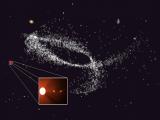
|
04/06/2014
Ancient worlds around a "foreign" star Two planets have been discovered around Kapteyn´s, a star that was possibly part of a satellite galaxy absorbed by the Milky Way |

|
29/05/2014 - 14:30
IAA Computing Service A cluster is defined as a collection of interconnected stand-alone workstations or PCs cooperatively working together as a single, integrated computing resource. Cluster Computing has become the paradigm of choice for executing large-scale science, engineering, and commercial applications. This is due to their low cost, high performance, availability of off-the-shelf hardware components and freely accessible software tools that that can be... Rafael Parra |
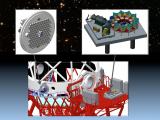
|
21/05/2014
The contract for the construction of MEGARA, the next optical instrument for the Gran Telescopio Canarias, is signed MEGARA is the first spectrograph capable of observing the emission of the gas located in between distant galaxies |

|
15/05/2014 - 14:30
Deep spectroscopy of planetary nebulae In nebulae astrophysics, there are two long-standing discrepancies: 1) the ionic and elemental abundances of C, N, O, and Ne derived from optical recombination lines (ORLs) are systematically higher than those derived from collisionally excited lines (CELs); 2) the electron temperature derived from H I recombination continuum (e.g., Balmer jump at 3646 A) is always lower than that derived from CELs. These two... Dr. Xuan Fang |
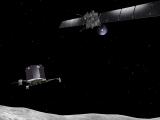
|
15/05/2014
Rosetta's target comet is becoming active The scientific imaging system OSIRIS on board ESA’s Rosetta spacecraft witnesses the awakening of the mission’s target comet |

|
14/05/2014 - 08:00
Qué es una partícula II: Hawking versus Unruh Esta charla pretende ser una introducción divulgativa a algunos de los fenómenos de la denominada Teoría Cuántica de Campos en espacios curvos. Las dos teorías físicas que, a fecha de hoy, describen las leyes de la naturaleza a un nivel más fundamental son la Relatividad General para el campo gravitatorio, y la Teoría Cuántica de Campos para el resto de campos físicos,... Luis Cortés Barbado Sala de Juntas del Nuevo Edificio (IAA-CSIC) |

|
24/04/2014 - 14:30
Inconsistences in the harmonic analysis of time series The power of asteroseismology relies on the ability to infer the stellar structure from the unambiguous frequency identification of the correspoinding pulsation mode. Hence, the use of a Fourier transform is in the basis of asteroseismic studies. Nevertheless, the difficulties with the interpretation of the frequencies found in many stars lead us to reconsider Fourier analysis and the classical methods used to process time series... Javier Pascual Granado |

|
23/04/2014 - 10:00
About Mars, its atmosphere and the dust El planeta Marte, con su color rojizo, siempre ha despertado la imaginación de la mente humana en diferentes culturas. Ha sido asociado al dios de la guerra, la destrucción y el inframundo. Ya no tenemos miedo a Marte ni a los marcianos como se tenía antaño, nuestra preocupación ahora es si nuestras naves llegarán al planeta rojo. Este fantástico planeta, el cual estamos descubriendo, tiene la... Dominika Dabrowska Sala de Juntas del Nuevo Edificio (IAA-CSIC) |
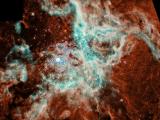
|
15/04/2014
The laws that determine how dust affects the light that reaches us from the stars are being rewritten Laws used since 1989 to correct this effect prompted errors in the characterization of stars and needed revision |

|
10/04/2014 - 14:30
Sculpting the Galactic Centre: Astrophysics and fundamental physics with photons and gravitational waves Since 1993 we have known that the Galactic Center (GC) displays a core-like distribution of red giant branch (RGB) stars starting at ~ 1'', which poses a theoretical problem, because the GC should have formed a segregated cusp of old stars. I postulate that the reason for the missing stars in the RGB is closely intertwined with the formation of a formerly existing dense gas disk, an episode that removed the... Dr. Pau Amaro-Seoane |

|
09/04/2014 - 09:30
'El hombre en la Luna: ¿una gran producción de NASA o de Hollywood? Resumen: Aprendemos en el colegio que el momento culminante del siglo XX fue la llegada del hombre a la Luna. Sin embargo, las limitaciones técnicas de la época, junto con la necesidad urgente que tenían los Estados Unidos de no dejarse vencer por Rusia en la carrera espacial podrían haber justificado lo que muchos afirman que es el mayor fraude de la historia de la Humanidad. En esta charla mostrar... Javier Peralta Sala de Juntas del Instituto de Astrofísica de Andalucía (IAA-CSIC) |

|
08/04/2014 - 14:30
The IAA Cloud Service The rise in speed of communications and the decline in prices of storage elements, has caused we can put some of our information on the net in order to make it available easily from anywhere. In this sense, it is said that your information is hosted in the cloud. Nowadays, there are several software solutions to sync and sharing files on the cloud, like Dropbox, Google Drive or Sky Drive, among others. In the IAA, a cloud... Francisco Manuel Bayo Muñoz and Juan José Guijarro Jiménez |

|
03/04/2014 - 14:30
A ring system detected around the Centaur (10199) Chariklo We will report observations of a multichord stellar occultation that revealed the presence of a ring system around the centaur object (10199) Chariklo. There are two dense rings,with respective widths of about 7 and 3 kilometres, optical depths of 0.4 and 0.06, and orbital radii of 391 and 405 kilometres. We will also present more results obtained after the occultation on June 3rd 2013. Photometric and spectroscopic... Dr. Rene Duffard |
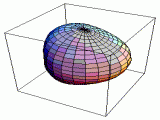
|
01/04/2014
Star-quakes reveal content of stars which are hotter and more massive than the sun The propagation of sound waves inside stars produces oscillations on their surface. The analysis of these oscillations makes it possible to know the internal structure and age of stars, and it has just turned out to be also effective in the detailed study of stars more massive than the sun |

|
27/03/2014 - 13:30
New findings on the X-ray emission from Wolf-Rayet nebulae We present the most recent results of XMM-Newton and Chandra observations on the only four Wolf-Rayet (WR) nebulae observed to date. Given the limited number of observations and the different morphological and spectral characteristics of these nebulae, it has been difficult to understand the physics behind the plasma emission. Numerical and analytical models can not explain the 'soft' nature and low plasma temperatures (T~106 K)... Jesús A. Toalá |
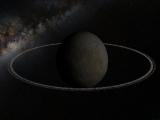
|
26/03/2014
A system of rings around a body of the Solar System which is not a planet has been spotted for the first time Chariklo, an object 250 kilometers in diameter has two rings around it possibly composed of water ice. The finding, involving researchers from the Institute of Astrophysics of Andalusia (IAA-CSIC), was made possible by a stellar occultation |

|
20/03/2014 - 13:29
The Nature of the IR Emission in Low-Luminosity AGN at Parsec Scales The vast majority of AGN belong to the low-luminosity class (LLAGN): they exhibit a low radiation efficiency (L/Ledd < 10^-3) and the absence of the big blue bump in their spectra, a signature of the accretion disk. The study of LLAGN is a complex task due to the contribution of the host galaxy, whose light outshines these faint nuclei. As a consequence, numerical models are usually compared with relatively poorly defined spectral energy... Juan Antonio Fernández Ontiveros |

|
13/03/2014 - 13:30
Quasars and their emission lines as cosmological probes Quasars are the most luminous stable sources in the Universe. They are currently observed out to redshift z ~ 7 when the Universe was less than one tenth of its present age. Since their discovery 50 years ago astronomers have dreamed of using them as standard candles. Unfortunately quasars cover a very large range (8 dex) of luminosity making them far from standard. I briefly review several methods that can potentially exploit quasars... Dr. Paola Marziani |

|
06/03/2014 - 13:30
La Asociación de Mujeres Investigadoras y Tecnólogas (AMIT) La incorporación de la mujer a la investigación, la docencia o la gestión de la Ciencia y las Humanidades supone un progreso social. La participación de las mujeres en estas esferas, sin embargo, no es igualitaria respecto a los hombres en la España de comienzos del siglo XXI. La presencia de la mujer es dramáticamente decreciente a medida que se sube en los escalones profesionales. AMIT es una... J. Masegosa |
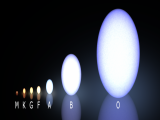
|
06/03/2014
GOSSS survey clears the way for study of massive stars The GOSSS survey was designed to fill the gaps and overcome the heterogeneity of previous surveys which led to systematic errors in the classification of stars |

|
26/02/2014 - 10:30
Espectroscopía de Elfos y Duendecillos Desde que a finales de los años 80 se descubrieran los duendecillos atmosféricos (Red Sprites) y los elfos (ELVES) muchos han sido los intentos por determinar sus características espectroscópicas. Los Sprites son enormes descargas eléctricas asociadas a intensos rayos positivos nube-tierra que se extienden desde la baja ionosfera hasta bien entrada la mesosfera y unos pocos milisegundos de duración.... Francisco C. Parra Rojas Sala de Juntas del Nuevo Edificio (IAA-CSIC) |
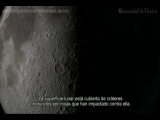
|
24/02/2014
The greatest impact of a rock against the moon has been observed The impact was observed by researchers from the University of Huelva and the Institute of Astrophysics of Andalusia (IAA-CSIC) and produced a glow brighter than the North Star |

|
20/02/2014 - 13:30
The AGN nature of LINER nuclear sources The origin of the main excitation mechanisms in LINER (Low Ionization Emission Line Region) nuclei are still controversial, with nonstellar photoionization, fast shocks or hot stars as the principal candidates. In the AGN scenario, LINERs could represent the link between more powerful AGN and normal galaxies as suggested by their low X-ray luminosities. Their interest increases as they would be the dominant population of active... Dr. I. Márquez |
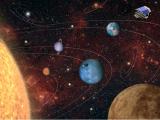
|
20/02/2014
Searching for New Worlds with PLATO Space eye with 34 telescopes will investigate one million stars Spain participaes actively in the mission |

|
13/02/2014 - 13:30
A powerful new method to measure the atmospheric water vapour column. We have developed a reliable powerful method to measure the atmospheric column of water vapour (PWV) down to very low levels. For this purpose we use and off-the-shelf cheap spectrometer to measure the equivalent width of the H2O bands at 940nm. In order to calibrate the measurements we use the radiative transfer model included in the package SCIATRAN to produce theoretical solar spectra as observed on the ground, based on simultaneous... Prof. E. Pérez |

|
12/02/2014 - 15:00
Identificación de la contrapartida óptica e infrarroja de la fuente transitoria J0109+6134 detectada por Fermi LAT Estudio de la contrapartida óptica e infrarroja de la fuente de rayos gamma J0109+6134. Investigaciones previas apuntan a que esta fuente es un blazar visto a través del plano galáctico. El propósito principal fue confirmar la contrapartida óptica previamente propuesta, estudiando su comportamiento en el tiempo. Para ello se llevó a cabo una campaña de fotometría diferencial CCD de... Estela del Mar Fernández Valenzuela Sala de Juntas del Instituto de Astrofísica de Andalucía (IAA-CSIC) |
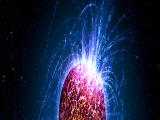
|
11/02/2014
Stars carry "memories" from their early life into in their final stages [UPDATE] It has been discovered that characteristics present at the start of a star’s life disappear during their adult life and re-emerge during their neutron star or white dwarf phases |

|
06/02/2014 - 13:30
The bricks of the Very Large Telescope Interferometer In this talk we will perform a review of the basic principles of the optical/near-infrared interferometry and of the current European facilities to use this observational technique. Particularly, we will describe the interferometric observables used at near-infrared wavelengths. We will provide a review of the current (and future) instruments available at the ESO Very Large Telescope Interferometer (VLTI), their advantages and limitations as... Lic. Joel Sánchez Bermúdez |

|
30/01/2014 - 13:30
The CHESS survey of the protostellar shock L1157-B1 Outflows generated by protostars heavily affect the kinematics and chemistry of the hosting molecular cloud due to strong shocks. These shocks heat and compress the ambient dense gas switching on a complex chemistry that leads to an enhancement of the abundance of several species, as reported in "chemically active" outflows, whose archetype is the outflow of the low-mass Class 0 protostar L1157. I'll present the results of... Dr. Gemma Busquet |
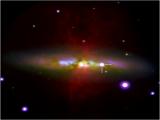
|
30/01/2014
A type Ia supernova, the closest to Earth since 1604, has been observed SN 2014J, discovered in galaxy M82, has mobilized experts from around the world. Pictures of the supernova were taken at the Estallidos Project site, coordinated by IAA, using the William Herschel telescope |

|
29/01/2014 - 15:00
Unos cuantos (cuentos) de gravedad Presentación informal de los siguientes contenidos: (1) descripción de las interacciones fundamentales en términos de partículas mediadoras, (2) la teoría clásica de gravedad que se sigue de la autointeracción de gravitones, (3) discusión del problema de la constante cosmológica en este contexto. Habrá galletas fritas. Raúl Carballo Rubio Sala de Juntas del Instituto de Astrofísica de Andalucía (IAA-CSIC) |

|
23/01/2014 - 13:30
Nucleosynthesis and molecular processes in evolved stars Most of the stars (M < 8 solar masses) in the Universe end their lives with a phase of strong mass loss and experience thermal pulses (TP) on the Asymptotic Giant Branch (AGB), just before they form Planetary Nebulae (PNe). They are one of the main contributors to the enrichment of the interstellar medium and thus to the chemical evolution of galaxies. More specifically, the more massive AGB stars form very different isotopes (such as... Dr. Anibal García Hernández |
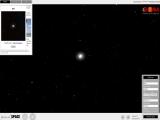
|
22/01/2014
The GLORIA Project launches ‘Personal Space’ - A free web-based tool to explore the Cosmos from your laptop The ‘Personal Space’ web application allows you to make a direct and personal connection to the universe by linking significant events in your own life with what was above you in the sky at that moment |

|
16/01/2014 - 13:30
Bar parameter evolution over the last 7 Gyr The tumbling pattern of a bar is the main parameter characterising its dynamics. This bar pattern speed, the bar ellipticity and its length are the three observational parameters that fully characterize bars. From numerical simulations, their evolution since bar formation is tightly linked to the dark halo in which the bar is formed through dynamical friction and angular momentum exchange. Observational ... Dr. Isabel Pérez |

|
15/01/2014 - 10:00
Damped Lyman-alpha Systems A finales de los 50 y principios de los 60 se descubrieron una serie de fuentes muy intensas en radio. El espectro óptico de estos objetos desconcertó al principio a la comunidad científica, ya que se observaban una serie de lineas en emisión y absorción que no se habían visto antes, hasta que se se cayó en la cuenta de que eran "las de siempre" desplazadas al rojo. Son los Quasi-... Rubén Sánchez Ramírez Sala de Juntas del Instituto de Astrofísica de Andalucía (IAA-CSIC) |
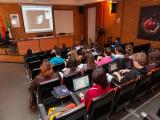
|
07/01/2014
The Institute of Astrophysics of Andalusia (IAA-CSIC) will participate in the fourth year of the Project to Introduce Research and Innovation into Secondary Schools in Granada (PIIISA 2014) The fourth year of this initiative, launched by IAA-CSIC and aimed at introducing secondary school students to the scientific method, begins tomorrow |

|
05/12/2013 - 13:30
Stellar water fountains: planetary nebulae in the making Planetary nebulae (PN) are one of the final phases in the evolution of low and intermediate mass stars (<8 Msun). They display a great variety of shapes, although in their previous phases (Asymptotic giant branch =AGB) they have a spherical geometry. The transition from spherical symmetry to asymmetry must occur during the short post-AGB phase or in the early PN phase. Here we present a special type of evolved stars, called "... Dr. JFrancisco Gómez |

|
28/11/2013 - 13:30
Galaxy clusters: galaxy laboratories and cosmological probes. A see you later seminar. In this talk -my last one in the IAA for the moment- I will talk about the largest structures in the Universe: galaxy clusters. The first part of the talk will be focused on galaxy clusters embedded in the large scale structure: how we detect them and how we can use them to provide estimations of cosmological parameters. In the second part, I will talk about the galaxies living in clusters, in particular, about the brightest cluster... Dr. Begoña Ascaso |

|
27/11/2013 - 10:30
Deconvolución de datos fotométricos SHARDS y IRAC: aplicación al estudio de LAEs a z>5 Los estudios fotométricos en óptico en IR de fuentes débiles son una perfecta alternativa a la espectroscopía, ya que ésta última técnica es ineficiente para este tipo de fuentes. Sin embargo, las imágenes fotométricas pueden poseer bajas resoluciones, tanto espacial como angular. La baja resolución angular puede deberse o bien al seeing atmosférico, en el caso de... naím Ramírez Olivencia Sala de Juntas del Nuevo Edificio (IAA-CSIC) |

|
19/11/2013 - 22/11/2013
The Galactic Center Black Hole Laboratory Granada |
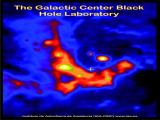
|
18/11/2013
Black hole in centre of Milky Way serves as experimental laboratory Experts from around the world are meeting this week at the Institute of Astrophysics of Andalusia (IAA-CSIC) to discuss the progress made on the study of the centre of our galaxy |
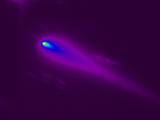
|
14/11/2013
ISON comet undergoes activity burst and it is visible with naked eye ISON will brush past the sun on 28 November next and will provide an outstanding opportunity to study the evolution of a new comet, recently arrived from the boundaries of the solar system |

|
13/11/2013
Ten billion years of cosmic evolution within arm’s reach Developed at the Calar Alto Observatory, ALHAMBRA has identified, classified and calculated the distance of more than half a million galaxies distributed in eight different celestial regions |

|
12/11/2013 - 14/11/2013
ALHAMBRA in the Alhambra Granada |

|
07/11/2013 - 13:30
Proposing observations with the European VLBI Network The European VLBI Network (EVN) is currently the most sensitive VLBI array in the world (its collecting area is about a hundred thousand square meters, or 1/10 of the planned Square Kilometer Array). I will give an overview of the EVN and the kind of science being done with this radio interferometric array, which essentially goes from Solar System studies up to quasars at high redshift. As a member of the EVN Programme Committee, I will... Dr. Miguel Angel Pérez-Torres |